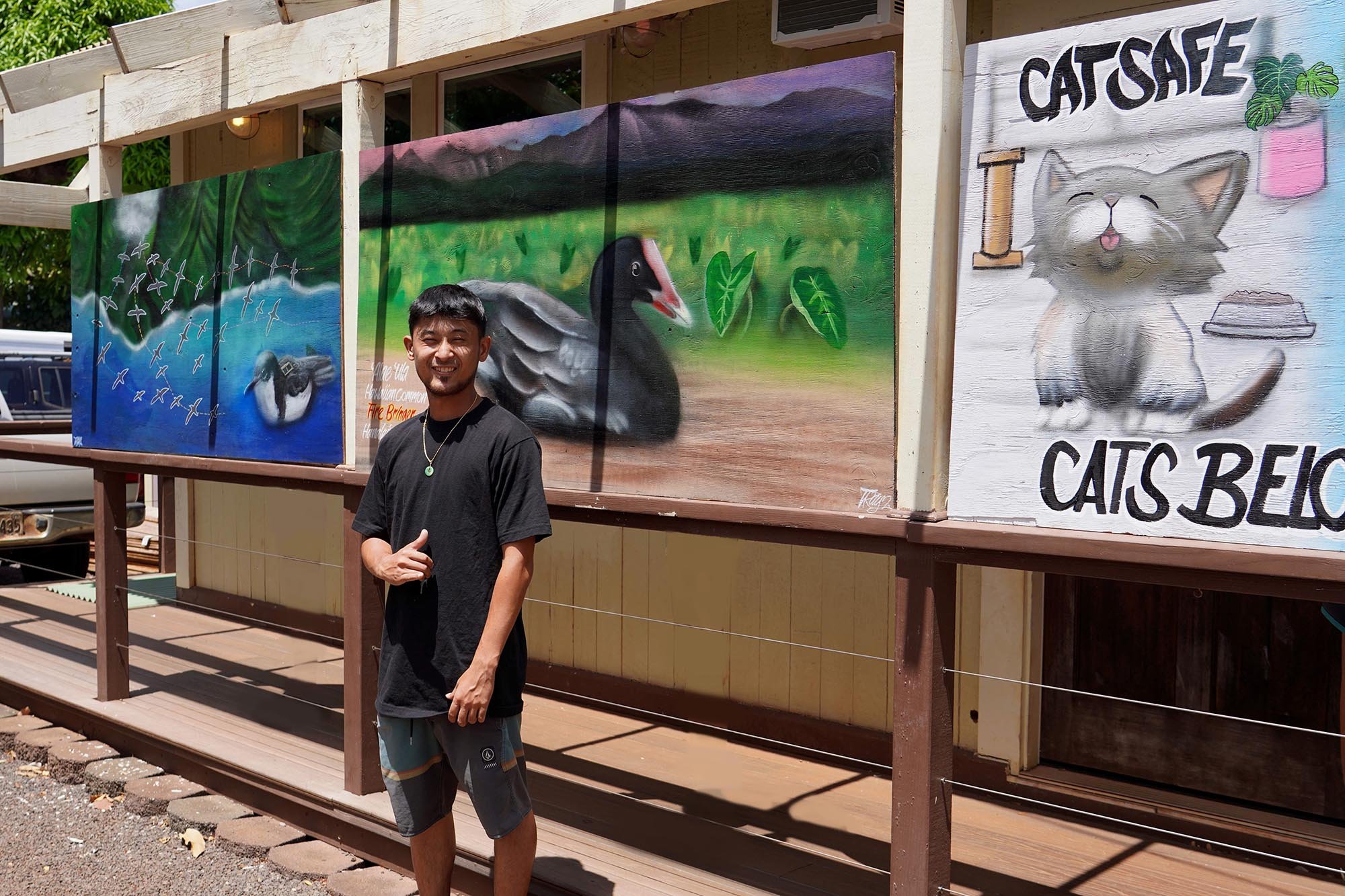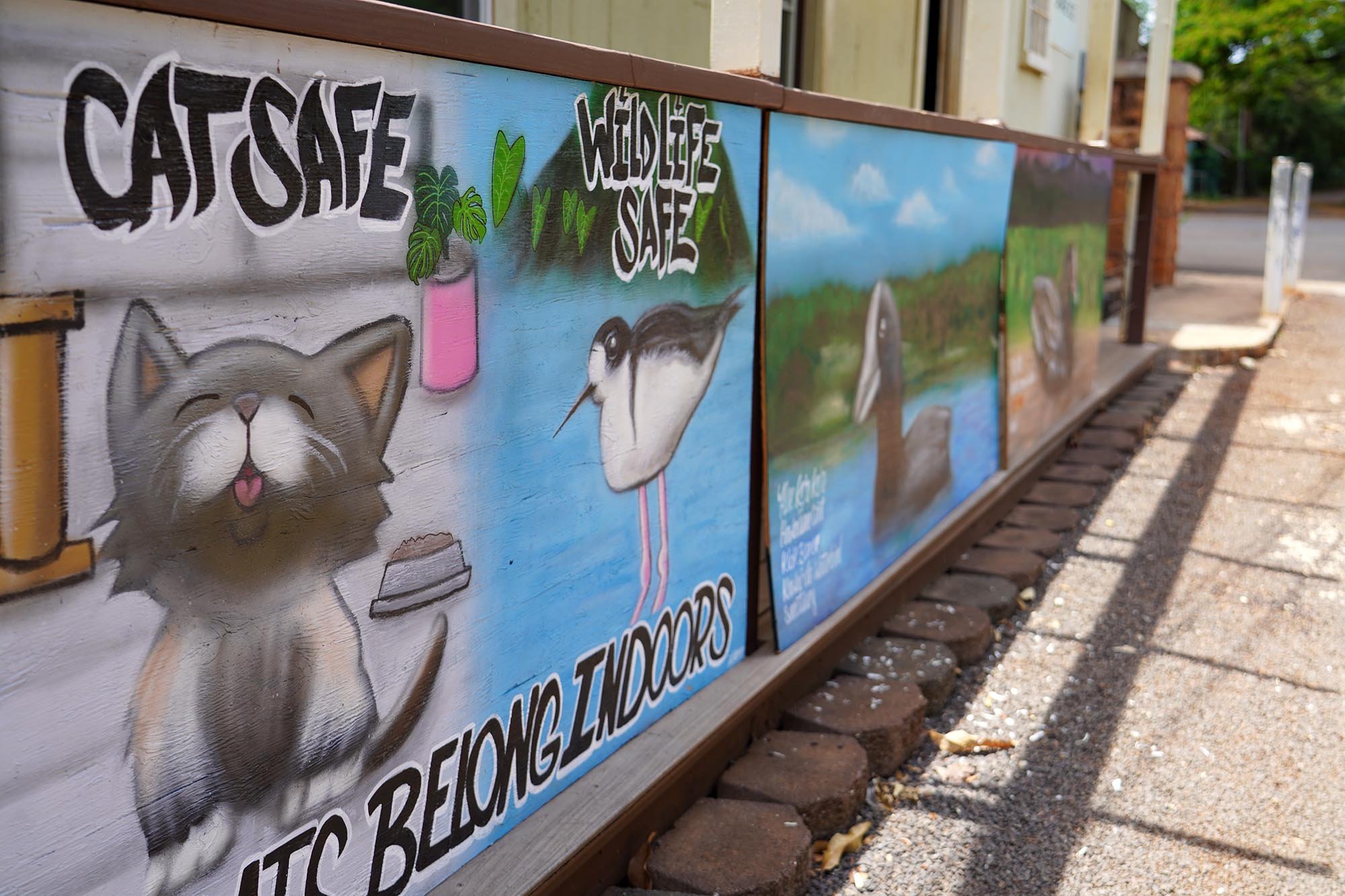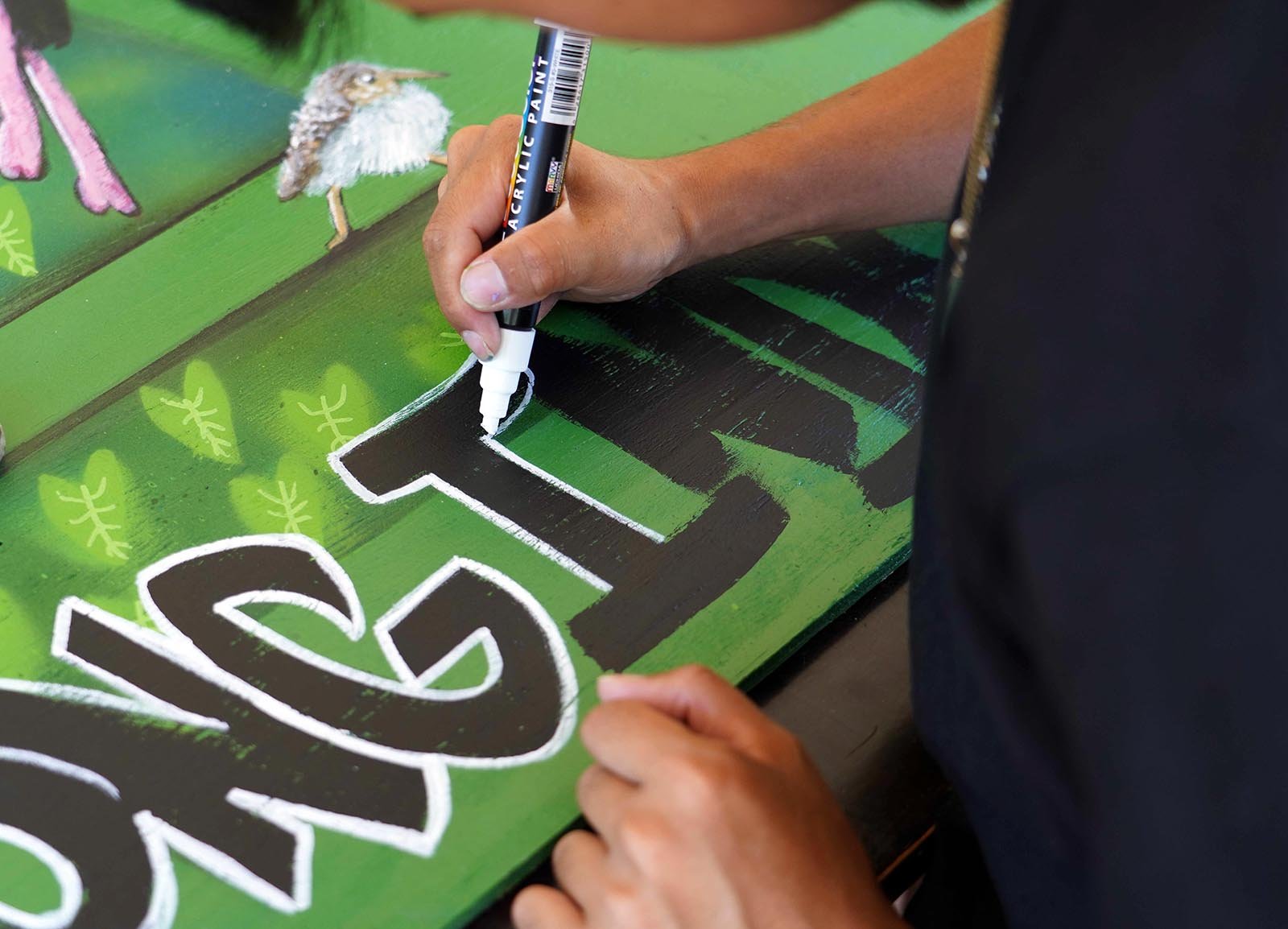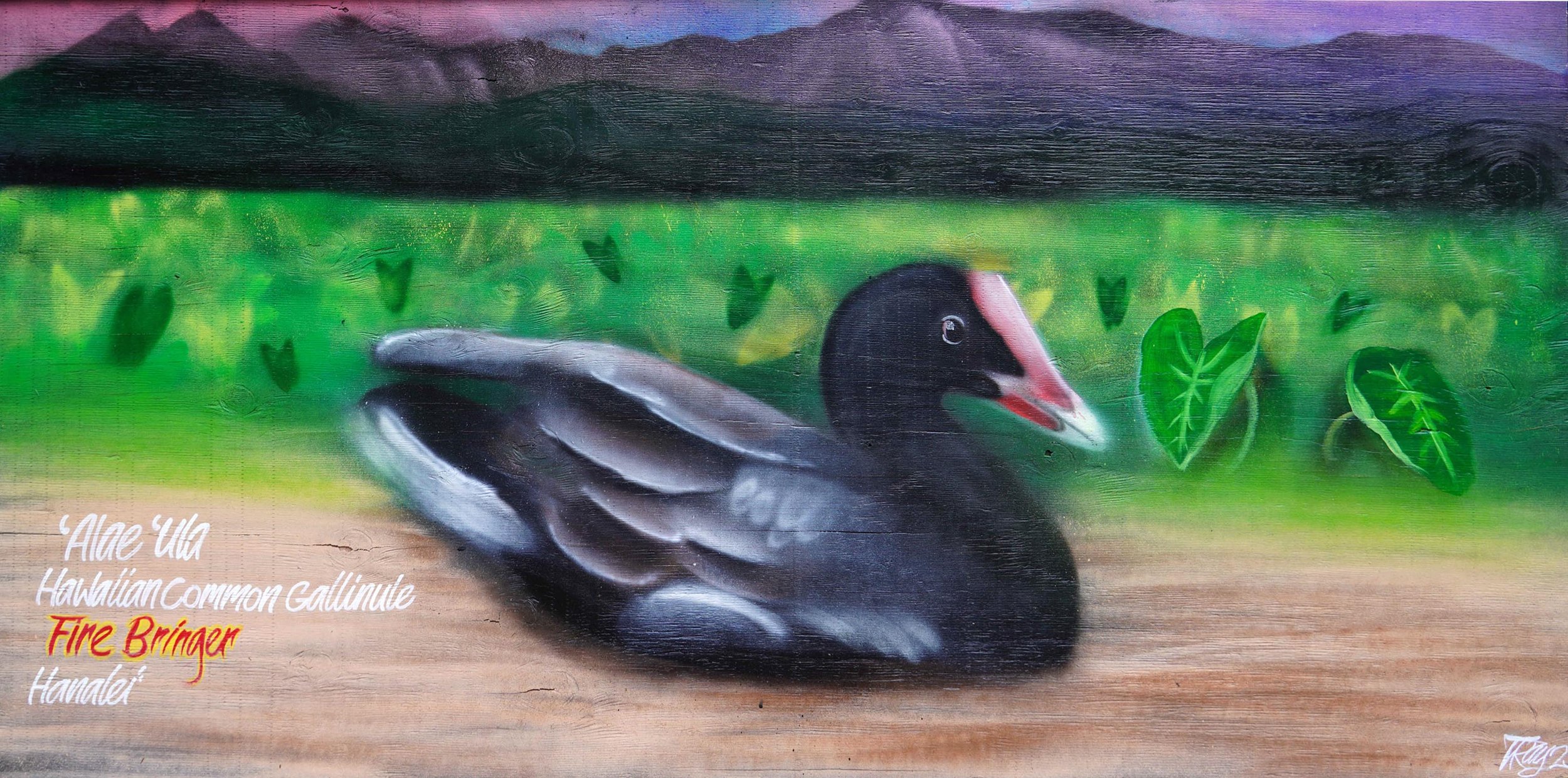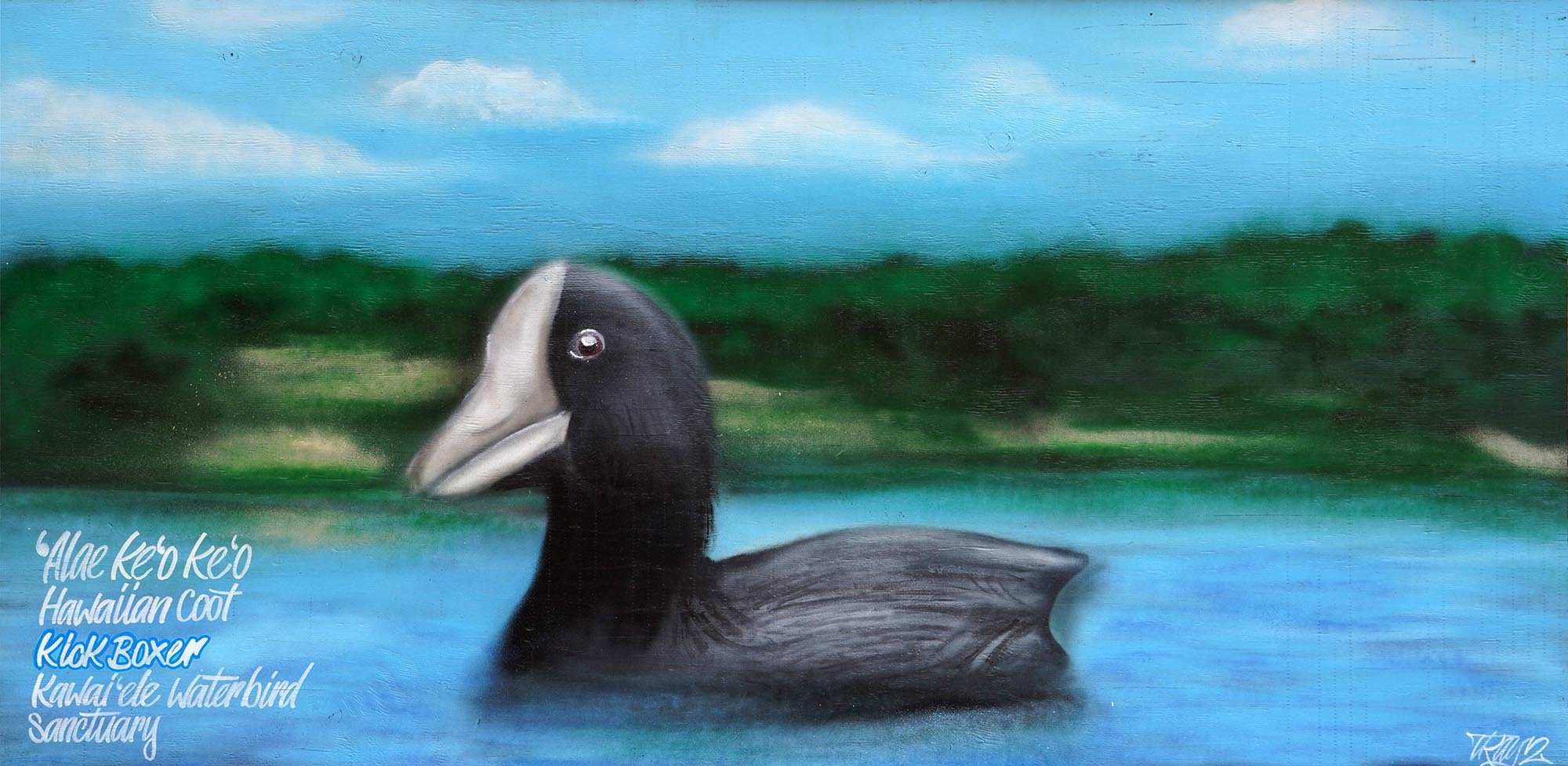Local Artist Paints A Brighter Future For Native Birds
Local multimedia artist Trysen Kaneshige has spent the last two months painting larger-than-life murals of our native waterbirds and seabirds. The project, which was supported by the County of Kaua‘i’s ‘Rise to Work’ program, uses street art to introduce Kaua‘i residents to our endangered native birds, and to the idea that both cats and birds are protected when cats are kept indoors.
Waterbirds like the ‘alae ‘ula (Hawaiian common gallinule) and koloa maoli (Koloa duck), as well as seabirds like mōlī (Laysan albatross) and ‘ua‘u (Hawaiian petrel), are an important and charismatic part of Hawaiian culture. Some of these birds are threatened with extinction across the state, but in Kaua‘i, we are lucky enough to be able to see them easily, at golf courses, parks and wetland areas. These birds evolved without any mammalian predators on our isolated islands, so they do not fly away when confronted by an introduced predator, like a cat. The risk to Kauaʻi’s waterbirds and seabirds is magnified by the massive number of feral cats roaming the landscape and the fact that these vulnerable birds nest on the ground.
Helen Raine, Executive Director of ARC, commissioned the work on behalf of the Kaua‘i Wildlife Coalition. She said, “Trysen’s innovative art shows the beauty of these Hawaiian birds, but also highlights their vulnerability to cats. The wildlife on Kaua‘i is unique – we’re the Noah’s Ark for some of these birds, often the last place in the state where they are still thriving.”
Outdoor cat colonies are also problematic. These colonies maintain cats in poor living conditions where they are at risk from car accidents, dog attacks and disease. Grant Sizemore of American Bird Conservancy, a KWC member, said, “It’s safer for both the cats and the birds when all cats are kept indoors, on a leash, or in a catio (fenced space). Cats can also spread a disease called toxoplasmosis to humans; it is particularly dangerous for pregnant women and their babies. In Hawaiian monk seals and dolphins, it is often fatal.” Research published in 2020 indicated a surprisingly high prevalence of Toxoplasma gondii, the parasite that causes toxoplasmosis, throughout Kauaʻi.
Trysen’s work is portable and will be exhibited in various locations around the island as COVID-19 restrictions are lifted.



